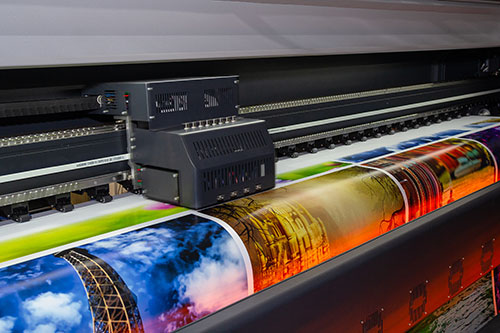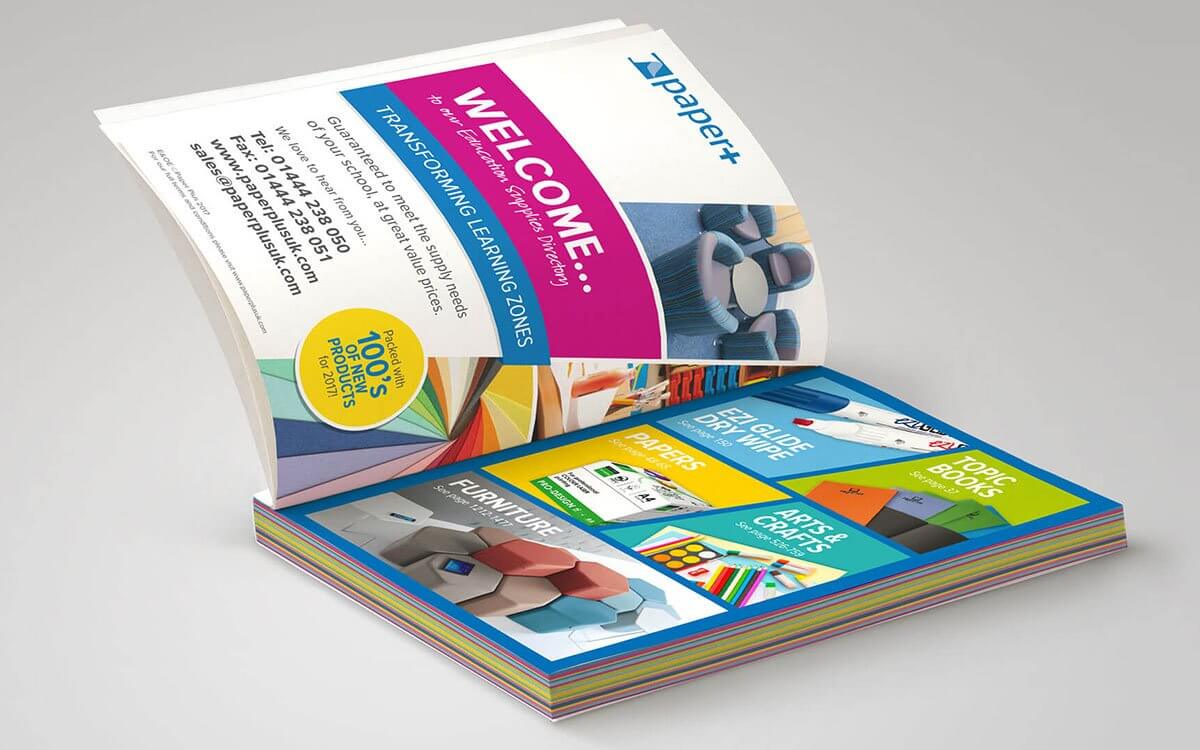How litho printing Helps Reduce Per-Unit Costs at High Volumes
Wiki Article
The Essential Guide to Recognizing Litho Printing and Its Applications
Litho printing stands as a significant approach in the printing industry, rooted in the principles of oil and water repulsion. This strategy not only delivers top notch images but likewise deals with different business demands. Its applications range from advertising products to product packaging, showcasing its versatility. As the industry adapts to new innovations, the development of litho printing raises concerns regarding its future and importance in an electronic landscape. What exists in advance for this enduring method?
What Is Litho Printing?
Litho printing, an extensively made use of printing strategy, counts on the concept of oil and water repulsion. This approach uses a level printing surface area, typically a steel plate, which is treated to guarantee that the image areas are receptive to oil-based inks while the non-image areas repel them. The process begins with the creation of an image on the plate, commonly via illustration or photo ways. Once the image is prepared, home plate is wetted with water, adhered to by the application of ink. The ink sticks only to the picture areas, enabling for accurate reproduction of graphics and message. Litho printing is preferred for its capability to create top quality prints with fine information and lively colors. It is typically used in business applications, consisting of newspapers, publications, and product packaging, showcasing its adaptability and efficiency in fulfilling the demands of modern-day printing.The Background of Lithography
Lithography is a contemporary printing staple, its beginnings map back to the late 18th century when German playwright Alois Senefelder invented the method in 1796. Developed as a technique for replicating messages and images, lithography made use of a level stone surface area to create prints via a chemical process. Senefelder's innovation permitted better flexibility and creative expression compared to previous printing methods.By the 19th century, lithography obtained extensive approval, becoming a prominent selection among musicians and authors. It made it possible for the mass production of images, maps, and posters, notably influencing the printing industry. The method better evolved with the introduction of lithographic presses, boosting efficiency and quality.As the industrial transformation proceeded, lithography adapted to satisfy the needs of industrial printing, leading the method for contemporary applications. Today, it continues to be a vital technique in different markets, including publishing, packaging, and great art recreation.Just How Litho Printing Works
An essential function of litho printing is its dependence on the concept of oil and water repulsion - litho printing. In this procedure, photos are transferred from a flat surface, usually a steel or polymer plate, to paper. Home plate is dealt with to make sure that the locations planned for printing bring in ink, while the non-image areas repel it because of their affinity for water. The printing starts by moistening home plate with water, which sticks to the non-image areas. Consequently, an oil-based ink is used, sticking only to the designated picture areas.When home plate enters call with the substratum, the ink is moved, producing a print. The litho printing process can creating premium pictures with fine detail. It is frequently used for automation because of its efficiency and uniformity, making it a favored approach for commercial printing applicationsAdvantages of Litho Printing
One notable advantage of litho printing is its capability to produce top quality photos constantly, making it an optimal choice for business jobs. This printing method makes use of a flat printing plate, ensuring even ink distribution and sharp information. Litho printing is also renowned for its shade accuracy, making it possible for vivid and true-to-life reproductions, which is essential for branding materials.Moreover, it sustains a wide range of substrates, consisting of paper, cardboard, and even particular plastics, enhancing its convenience. The process is affordable for huge runs, as economic climates of scale minimize per-unit prices. Furthermore, litho printing has a fast turnaround time, permitting reliable manufacturing schedules.Its resilience additionally means that printed materials resist fading, making sure that the end product preserves its aesthetic appeal over time. Generally, these benefits make litho publishing a preferred option throughout various industries, adding to its long-lasting popularity.
Applications of Litho Printing in Organization
As companies progressively look for dependable and top notch printing remedies, litho printing emerges as an essential player in different applications. This strategy go is particularly favored for creating advertising products such as sales brochures, leaflets, and catalogs, thanks to its ability to provide dynamic colors and sharp pictures. Furthermore, litho printing is often used for product packaging remedies, permitting business to develop eye-catching labels and boxes that enhance product appeal.In the field of corporate identity, litho printing is critical in creating expert stationery, calling card, and marketing product, which assist strengthen brand recognition. It is widely used in the posting sector for published materials such as publications and publications, where consistent quality is extremely important. On the whole, litho printing's convenience and performance make it an important tool for organizations intending to interact effectively and develop a strong market presence.Artistic Use Litho Printing
Litho printing functions as a flexible medium in the domain name of printmaking, offering musicians a distinct approach to reveal their creativity. This strategy enables for a large range of creative applications, from traditional prints to modern interpretations. By exploring the subtleties of litho printing, artists can harness its unique qualities to boost their work.
Printmaking Strategies Summary
The creativity of printmaking encompasses a varied variety of strategies, with litho printing standing apart for its one-of-a-kind method to photo creation. This technique depends on the principle of oil and water repulsion, permitting musicians to draw straight onto a sedimentary helpful site rock or metal plate with a greasy tool. As soon as prepared, the plate is dampened and tattooed, moving the photo onto paper through stress. Litho printing is celebrated for its capacity to produce fine information and rich tonal variations, making it a favored option amongst musicians. Additionally, the process is flexible, suiting both typical methods and contemporary adaptations. This versatility enables litho printing to bridge numerous imaginative styles, improving the printmaking landscape with its distinctive attributes and capabilities.Distinct Artistic Applications
Checking out the special imaginative applications of litho printing discloses its exceptional adaptability in numerous imaginative areas. Artists utilize litho printing to create elaborate styles and structures, permitting meaningful and comprehensive works. The process promotes the reproduction of vivid shades, making it suitable for images and art prints. Several modern musicians welcome lithography for its capability to incorporate traditional techniques with modern-day ideas, leading to ingenious art work. Furthermore, litho printing is commonly utilized in the production of limited edition prints, boosting their worth and allure. The responsive high quality of litho prints adds a distinct measurement, drawing in collection agencies and art enthusiasts alike. Overall, litho printing continues to be a substantial medium for artistic expression, connecting traditional methods with modern imagination.The Future of Litho Printing in a Digital World
As the printing sector progresses, litho printing deals with the challenge of incorporating digital technologies to continue to be relevant. Techniques concentrated on digital integration, along with patterns in sustainability and development, will certainly shape its future - litho printing. Comprehending these dynamics is necessary for sector stakeholders looking to adapt to a rapidly altering landscapeDigital Integration Techniques
An expanding number of litho printing companies are welcoming electronic integration techniques to stay competitive in a significantly digital landscape. By integrating electronic process, these firms can streamline procedures and boost effectiveness. This assimilation permits real-time data administration and boosted communication between divisions, reducing turnaround times substantially. Furthermore, electronic devices enable much better customization and customization of published products, satisfying certain consumer needs. Companies are likewise embracing crossbreed printing remedies that combine typical litho techniques with digital innovations, supplying versatility in production. Furthermore, leveraging information analytics assists in recognizing market fads and consumer preferences, permitting companies to make enlightened decisions. On the whole, electronic combination is ending up being necessary for litho printing business aiming to innovate and reply to evolving market needs.Sustainability and Advancement Fads

Regularly Asked Questions
What Materials Are Generally Utilized in Litho Printing?
The products typically made use of in litho printing include light weight aluminum plates, ink, water, and paper. Each element plays an essential duty in the printing process, making sure high-grade image reproduction and effective transfer of ink onto the substratum.Exactly How Does Litho Printing Contrast to Digital Printing?
Litho printing offers premium color uniformity and top quality for huge runs, while digital printing stands out in brief runs and personalization. Each approach has distinct advantages, catering to various demands based upon production range and cost-efficiency.What Is the Regular Turn-around Time for Litho Printing Projects?
The regular turn-around time for litho printing jobs differs, normally ranging from a couple of days to numerous weeks. Variables influencing this timeframe include job intricacy, amount, and needed ending up processes, influencing total production routines.Can Litho Printing Accommodate Custom-made Sizes and Formats?
Litho printing can without a doubt suit custom sizes and styles, allowing for versatility in style. This versatility enables clients to attain special print results tailored to their certain requirements, improving the general efficiency of their jobs.What Are the Environmental Impacts of Litho Printing?
Discover More Here The environmental impacts of litho printing consist of source intake, chemical usage, and waste generation. Advancements in sustainable practices and eco-friendly products are slowly decreasing these negative results, advertising a more eco accountable method to printing.Report this wiki page